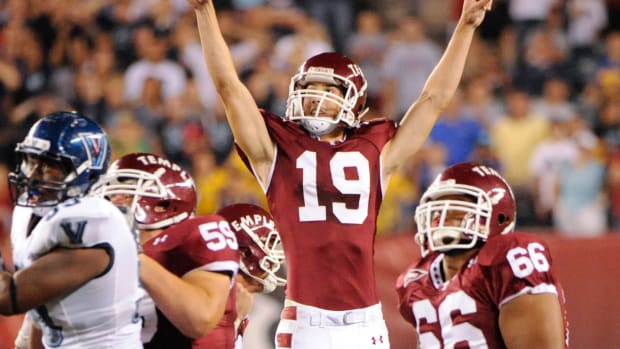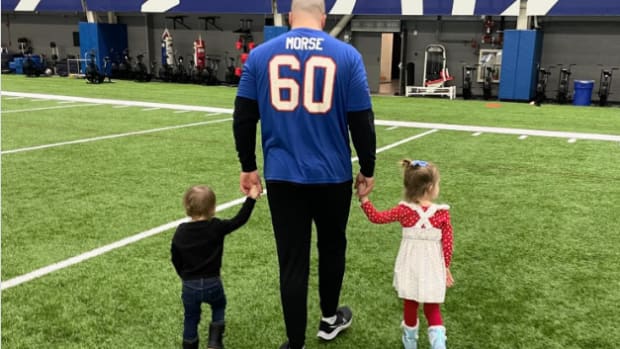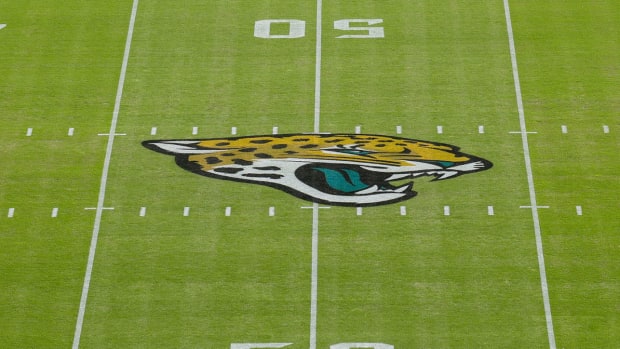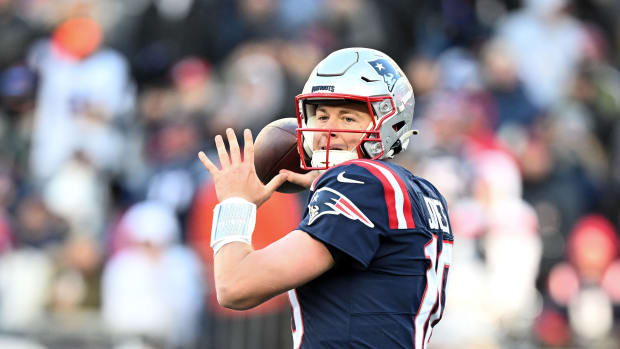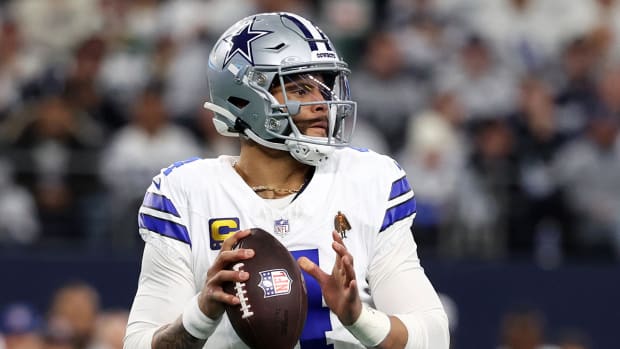Breaking Down Jaguars' Rookie Edge Rusher K'Lavon Chaisson's College Production
When the Jacksonville Jaguars selected LSU defensive end/outside linebacker K'Lavon Chaisson with the No. 20 overall pick in last month's NFL Draft, they made a major investment into a position which has become the driving force of their defense for the last several years.
In Chaisson, who many draft analysts projected to be the No. 2 pass-rusher behind Ohio State's Chase Young, the Jaguars took a roll of the dice on a young, athletic, and still developing edge player. The Jaguars needed to prioritize their pass-rush due to the uncertain future of defensive end Yannick Ngakoue, and in drafting Chaisson they made a call for both the present and the future.
Even if Ngakoue plays for the Jaguars in 2020, which is unlikely at best, Chaisson will still figure to play a big role in the Jaguars' defense. Second-year pass-rusher Josh Allen needs a running mate, while the team may even be overhauling their defensive scheme and changing to a 3-4 base unit, which would require a player with a skill set like Chaisson's.
But Chaisson didn't enter the draft without potential question marks. While the Jaguars have lauded his versatility, leadership, ability to set the edge, and obviously his pass-rush prowess, there are still some obstacles Chaisson will have to clear in his pursuit of a productive NFL career.
The primary knock on Chaisson as he entered the draft? A track record of production at LSU that didn't scream dominance. In three seasons (26 career games), Chaisson recorded 92 tackles, 19.0 tackles for loss and 9.5 sacks. These aren't exactly figures that jump off the page, especially in comparison to Allen's career at Kentucky (41 tackles for loss, 31.5 sacks).
Some context is of course needed. For starters, Chaisson suffered a torn ACL after just one game in his sophomore season in 2018. This not only kept him off the field for a year, leading to a medical redshirt, but forced him into a recovery process. Then in 2019, the athletic defensive end missed a few games with an ankle injury, once again sapping him of chances to produce.
But even following a string of injuries, Chaisson's 2019 season was clearly the peak of his time with the Tigers. He led the eventual national champions in sacks and tackles for loss, and came up big in some of LSU's most important games.
2017: 27 tackles, 4.5 tackles for loss, two sacks.
2018: Five tackles, one tackle for loss, one sack.
2019: 60 tackles, 13.5 tackles for loss, 6.5 sacks.
With Chaisson's shaky track record of production in mind, we opted to take a look at when Chaisson did produce and against which teams. With this said, it should be kept in mind that many of Chaisson's best plays didn't end up on a stat sheet, such as the National Championship game vs. Clemson in which he didn't record a sack but made Trevor Lawrence's life a nightmare for four quarters.
When taking a look at Chaisson's college production, we consider which teams he produced against, the atmospheres in which he played his best in, and more.
For instance, here are Chaisson's stats when evaluating when he played at home at LSU, when he was at an opponent's stadium, and when he was on a neutral field such as during postseason games. These splits are all courtesy of College Football Reference.
At LSU (12 games): 49 tackles, 10.5 tackles for loss and 4.5 sacks.
At opponent stadiums (8 games): 21 tackles, 4.5 tackles for loss, and one sack.
At neutral fields (6 games): 22 tackles, four tackles for loss, four sacks.
Since Chaisson played his college games at LSU more often times than not, it is understandable for his home splits to be so much better than his road splits. With that said, it is a bit jarring how much more productive Chaisson was when playing on a neutral field in comparison to when he played at other opponent's home field.
This could be a positive in a way, however. Neutral field games typically indicate a game of high importance such as a conference championship game, College Football Playoff, or National Championship.
For context, Chaisson's neutral field games included games vs. Georgia (SEC Conference Championship), Oklahoma (playoff semi-finals), and Clemson (National Championship game).
What about how Chaisson's numbers look when you compare them against the competition he played? Did he perform well vs. better competition, or feast on the bottom-tier of LSU's schedule?
Luckily for the Jaguars, Chaisson's best games came in his biggest moments. In his career, Chaisson recorded sacks vs. seven opponents, with most of them being above-average to great teams. Below is the list of Chaisson's sacks by the opponent to put his level of competition play into context, as well as his overall stats vs. each conference.
By conference:
Vs. SEC: 51 tackles, 11.5 tackles for loss, 3.5 tacks.
Vs. Big 12: 11 tackles, three tackles for loss, three sacks.
Vs. ACC: 11 tackles, 1.5 tackes for loss, one sack.
Vs. Sun Belt: 9 tackles, 0.5 tackles for loss.
Vs. Mountain West conference: One tackle.
Vs. Independents: Five tackles.
Vs. non-majors: Four tackles, 2.5 tackles for loss, two sacks.
By team:
Chattanooga (0-2 following game): Four tackles, 2.5 tackles for loss, and two sacks.
Oklahoma (12-2 following game): Six tackles, two tackles for loss, two sacks.
Texas A&M (7-5 following game): Six tackles, 1.5 tackles for loss, 1.5 sacks.
Texas: (1-1 following game): Five tackles, one tackle for loss, one sack.
Miami (0-1 following game): Five tackles, one tackle for loss, one sack.
Florida (6-1 following game): Eight tackles, three tackles for loss, one sack.
Georgia (11-2 following game): Four tackles, one tackle for loss, one sack.
So as this clearly shows, Chaisson had his best and most productive performances vs. the top teams LSU played, even without any sacks from his dominant game against Clemson.
Whether it be Florida, Georgia, Clemson or Oklahoma, Chaisson was able to flip the switch against the best offensive tackles he faced each week. There are legitimate concerns with Chaisson's track record of production, injury history, and NFL readiness, but the concerns should be mitigated to a degree by the fact that he still made impact plays in LSU's most important games.

